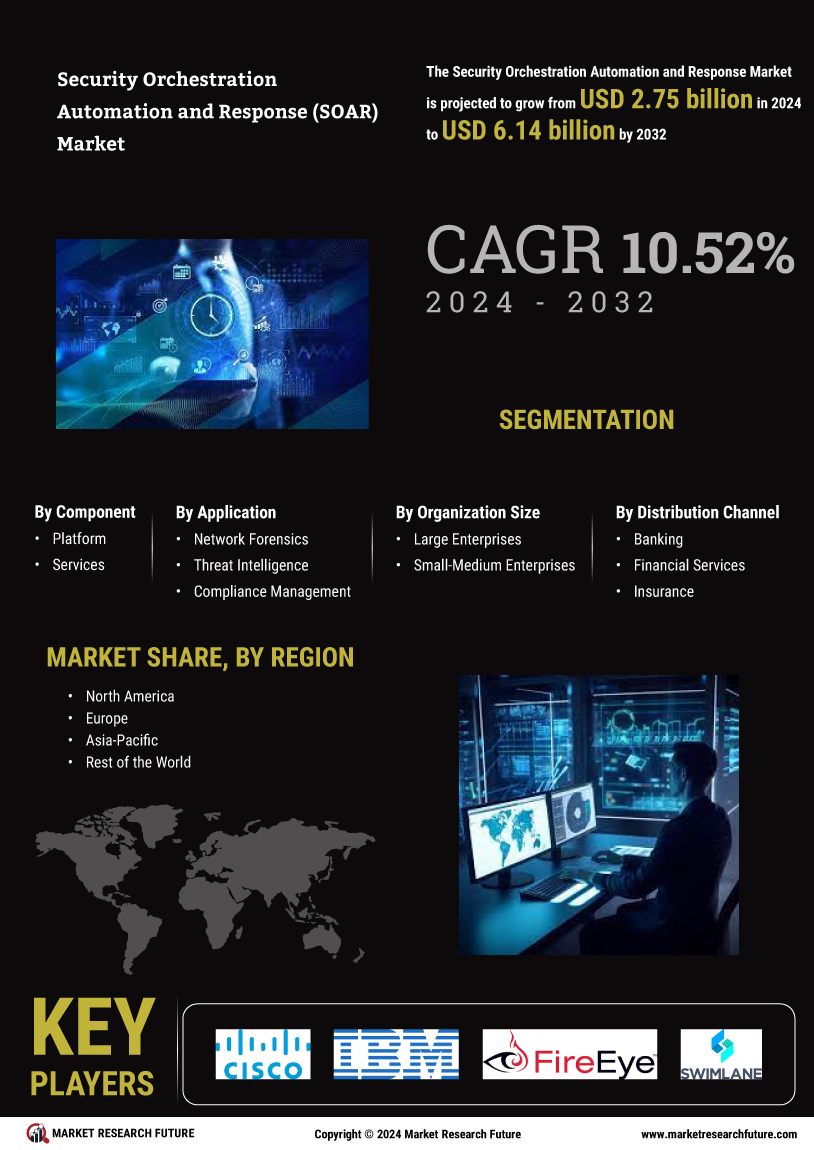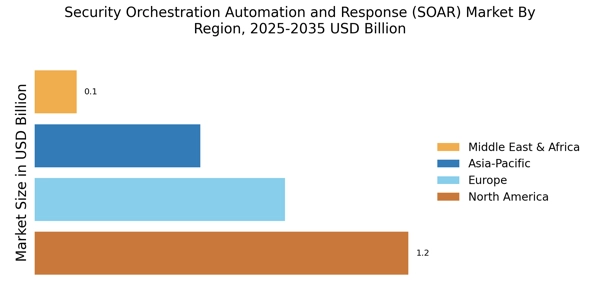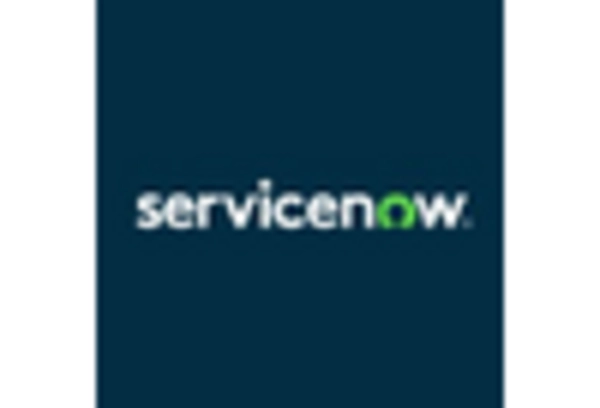The Security Orchestration Automation and Response (SOAR) Market is currently characterized by a dynamic competitive landscape, driven by the increasing need for organizations to enhance their cybersecurity posture amidst evolving threats. Key players such as Palo Alto Networks (US), Splunk (US), and IBM (US) are at the forefront, each adopting distinct strategies to solidify their market presence. Palo Alto Networks (US) emphasizes innovation through continuous product enhancements and integration of artificial intelligence, while Splunk (US) focuses on expanding its cloud capabilities to cater to a growing demand for scalable solutions. IBM (US), on the other hand, is leveraging its extensive research and development resources to drive advancements in automation and analytics, thereby enhancing its operational focus on enterprise security solutions. Collectively, these strategies contribute to a competitive environment that is increasingly defined by technological sophistication and the ability to respond swiftly to emerging threats.
In terms of business tactics, companies are increasingly localizing their operations to better serve regional markets, optimizing supply chains to enhance efficiency, and investing in partnerships to expand their service offerings. The market structure appears moderately fragmented, with a mix of established players and emerging startups vying for market share. This fragmentation allows for diverse solutions and innovations, although the collective influence of key players like Palo Alto Networks (US) and IBM (US) tends to dominate the competitive dynamics.
In August 2025, Palo Alto Networks (US) announced a strategic partnership with a leading cloud service provider to enhance its SOAR capabilities, integrating advanced machine learning algorithms into its platform. This move is likely to bolster its competitive edge by providing clients with more robust threat detection and response capabilities, thereby addressing the increasing complexity of cyber threats. The partnership underscores the importance of collaboration in the tech landscape, particularly in enhancing product offerings through shared expertise.
In September 2025, Splunk (US) unveiled a new suite of automation tools designed to streamline incident response processes for security teams. This initiative reflects a strategic pivot towards user-centric solutions, aiming to reduce response times and improve operational efficiency. By focusing on automation, Splunk (US) positions itself as a leader in the SOAR market, catering to organizations seeking to optimize their security operations amidst resource constraints.
In July 2025, IBM (US) launched an upgraded version of its SOAR platform, incorporating advanced analytics and AI-driven insights. This upgrade is indicative of IBM's commitment to maintaining its leadership position in the market, as it seeks to provide clients with actionable intelligence that enhances decision-making during security incidents. The integration of AI not only improves the platform's functionality but also aligns with broader industry trends towards intelligent automation.
As of October 2025, the SOAR market is witnessing trends that emphasize digital transformation, AI integration, and sustainability. Strategic alliances are increasingly shaping the competitive landscape, as companies recognize the value of collaboration in driving innovation. Looking ahead, competitive differentiation is likely to evolve, with a shift from traditional price-based competition towards a focus on technological innovation, reliability in supply chains, and the ability to deliver comprehensive security solutions. This evolution suggests that companies that prioritize innovation and strategic partnerships will be better positioned to thrive in the rapidly changing cybersecurity landscape.


















Leave a Comment